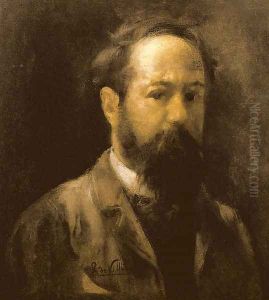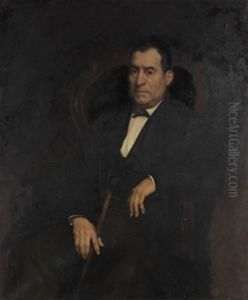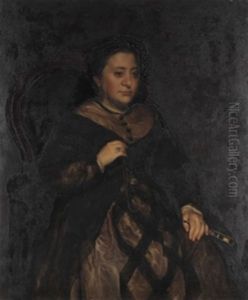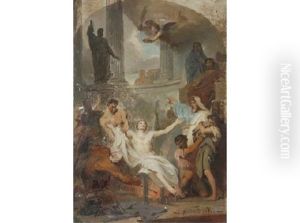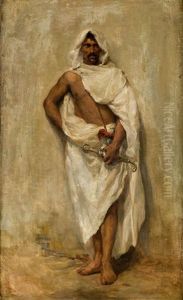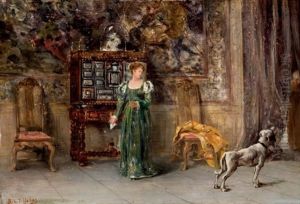Ricardo de Villodas de la Torre Paintings
Ricardo de Villodas de la Torre was a Spanish artist born in 1846 in Cadiz, Spain. Not a widely known figure outside of specialized art historical circles, Villodas de la Torre's contributions to the art world during his lifetime were primarily in the realm of painting. He developed a style that was influenced by Romanticism, a movement that was characterized by an emphasis on emotion and individualism, as well as a glorification of the past and nature.
Villodas de la Torre received his artistic training at the Royal Academy of Fine Arts of San Fernando in Madrid, where he was exposed to the works of great Spanish masters. His education provided him with a strong foundation in traditional techniques and the academic style of painting, which was prevalent in 19th-century Spain. Throughout his career, he participated in various national exhibitions and gained some recognition for his historical and genre paintings.
Despite his training and participation in the art scene, Ricardo de Villodas de la Torre did not achieve the same level of fame as some of his contemporaries, such as Mariano Fortuny or Eduardo Rosales. His works, however, were appreciated for their detailed execution and often contained a certain lyricism and sensitivity that reflected the artist's personal vision.
Ricardo de Villodas de la Torre's paintings can be seen as a bridge between the Romantic sensibilities of the earlier 19th century and the more realistic approaches that were emerging at the end of the century. He passed away in 1904, leaving behind a modest but meaningful body of work that continues to be studied by those interested in the artistic developments of 19th-century Spain.
